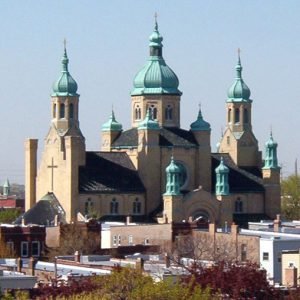 As I have shared, the Ukrainian Greek-Catholic Church came into union with the Catholic Church of Rome through the Union of Brest-Litovsk. A Papal Bull was issued by the pope that recites the events which led to the union, the arrival of six Ruthenian bishops at Rome, their abjuration, and the concessions made by the Roman Church. The Ruthenians were to retain their own rite, saving such customs as were opposed to the purity of Catholic doctrine and incompatible with the communion of the Roman Church. From the 9th century, the “land of the Rus”, which was known later as Kievan Rus, was known in Western Europe by a variety of names. From the 12th century Rus was usually known in Western Europe by the Latinised name Ruthenia. In their broadest usage, Ruthenians were used to refer to peoples now called Belarusians, Russians, and Ukrainians.
As I have shared, the Ukrainian Greek-Catholic Church came into union with the Catholic Church of Rome through the Union of Brest-Litovsk. A Papal Bull was issued by the pope that recites the events which led to the union, the arrival of six Ruthenian bishops at Rome, their abjuration, and the concessions made by the Roman Church. The Ruthenians were to retain their own rite, saving such customs as were opposed to the purity of Catholic doctrine and incompatible with the communion of the Roman Church. From the 9th century, the “land of the Rus”, which was known later as Kievan Rus, was known in Western Europe by a variety of names. From the 12th century Rus was usually known in Western Europe by the Latinised name Ruthenia. In their broadest usage, Ruthenians were used to refer to peoples now called Belarusians, Russians, and Ukrainians.
On February 7, 1596, Pope Clement VIII addressed to the Ruthenian episcopate the Brief “Benedictus sit Pastor ille bonus”, enjoining the convocation of a synod in which the Ruthenian bishops were to recite the profession of the Catholic Faith. Various letters were also sent to the Polish king, princes, and magnates exhorting them to receive the Ruthenians under their protection. A second Bull, “Decet Romanum pontificem”, dated 23 Februray, 1596, defined the rights of the Ruthenian episcopate and their relations in subjection to the Holy See.
It was agreed that the “Filioque” should not be inserted in the Nicene Creed, although the Ruthenian clergy professed and taught the procession of the Holy Spirit from the Father and the Son. The bishops asked to be dispensed from the obligation of introducing the Gregorian Calendar, so as to avoid popular discontent and dissensions, and insisted that the king should grant them, as of right, the dignity of senators. This union was strongly supported by the King of Poland and Grand Duke of Lithuania, Sigismund III Vasa, but opposed by some bishops and prominent nobles of Rus, and perhaps most importantly, by the nascent Cossack movement for Ukrainian self-rule. The result was “Rus fighting against Rus,” and the splitting of the Church of Rus into Greek Catholic and Greek Orthodox jurisdictions.
By the end of the 18th century, the modern Ukrainian language had been codified and so the name for those connected with Kiev were no longer called Ruthenian. There did remain a portion of the area, Carpathian Ruthenia, which retained the name Ruthenians or Rusyns. Many in the Byzantine Catholic Church are Rusyns.
